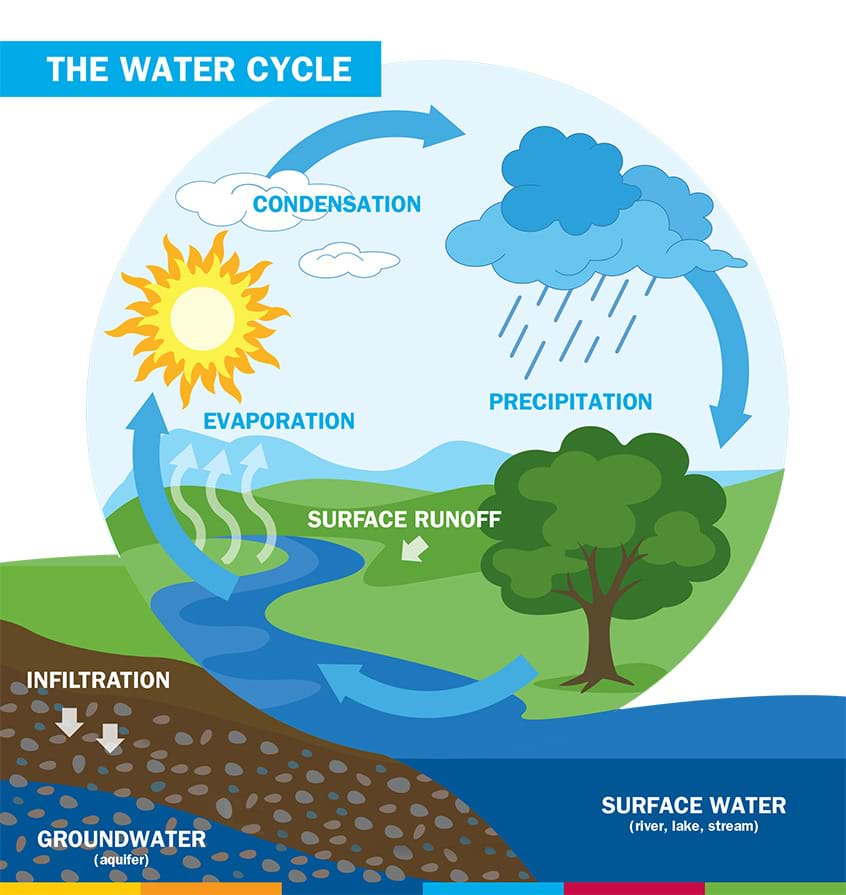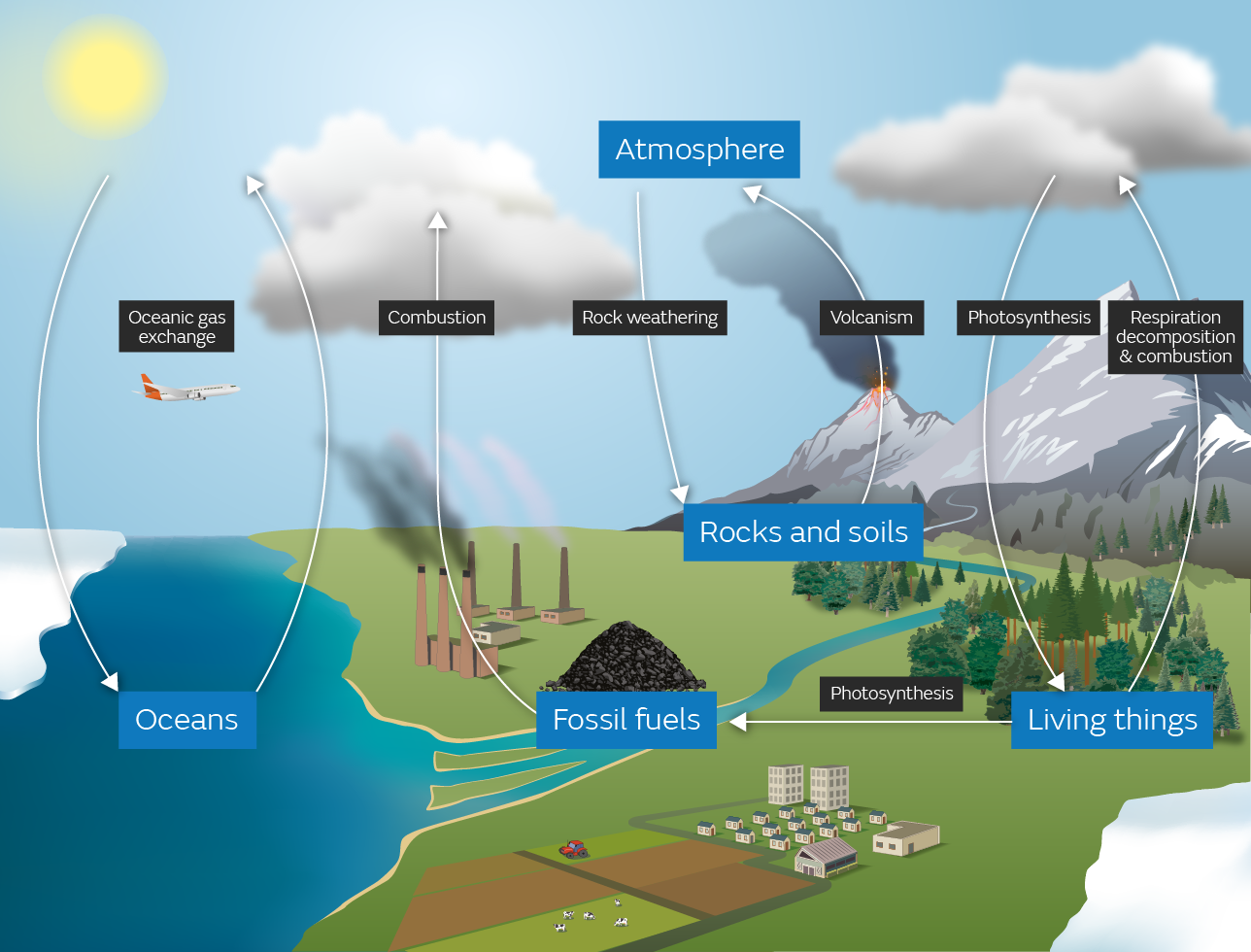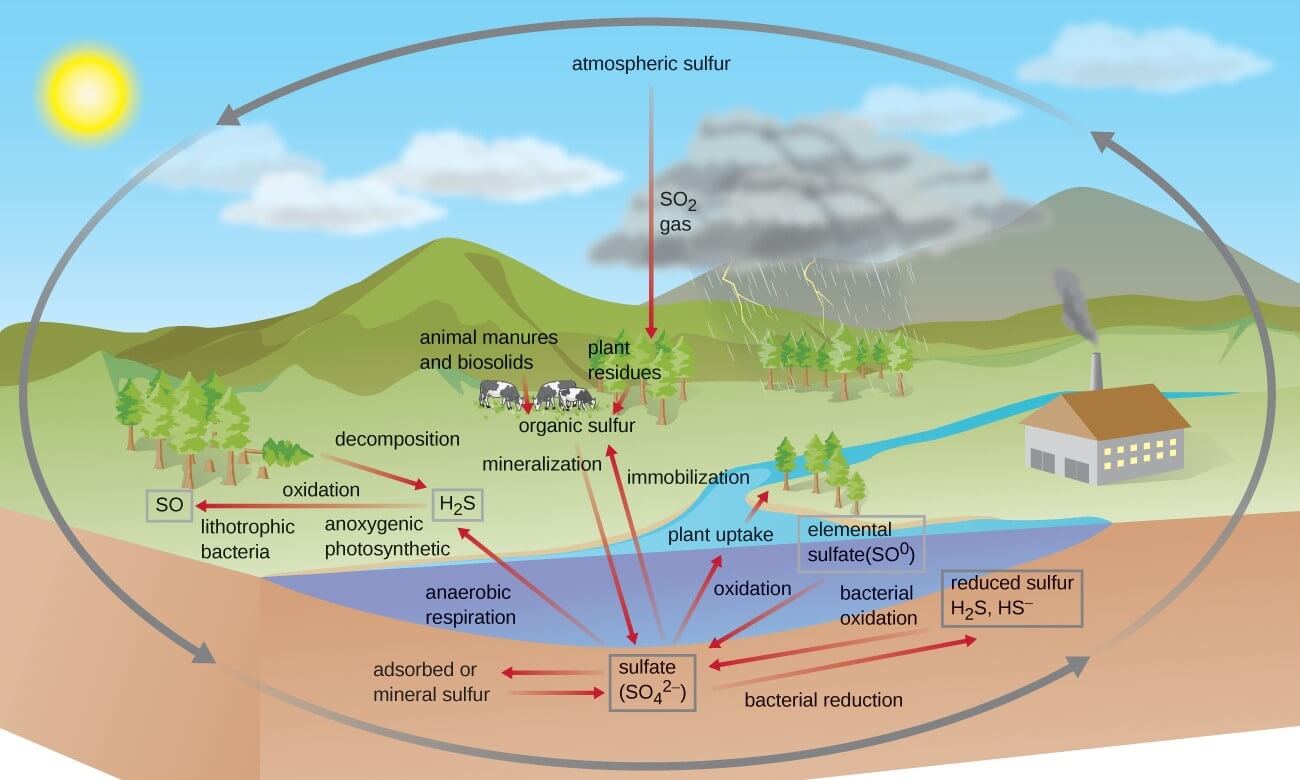New Environment Class 03
BRIEF DISCUSSION OF THE PREVIOUS CLASS (5:12 P.M.)
FUNCTIONS IN ECOSYSTEM (5:24 P.M.)
- Biotic interaction
- Types of Organisms in Ecosystem
- (a)Producers
- These are capable of photosynthesis.
- For example, plants and phytoplankton.
- (b)Herbivores
- These are plant-eating organisms.
- For example, Cow, goat, etc.
- (c)Carnivores
- They feed on herbivores.
- For example, lion, wolf, etc.
- (d)Detrivores/Scavengers
- They feed on dead matter.
- For example, Hyena, Vultures, etc.
- (e)Nectarivores
- They feed on nectar.
- For example, Hummingbird, Sunbird, etc.
- (f)Frugivores
- They eat fruits.
- For example, Parrots, Parakeets, Great Hornbill, Monkeys, etc.
- (g)Gramivores
- They feed mainly on grass.
- For example, Sparrow, Munia, Bluethroat birds, Deers, Horses, Cows, Elephant, Rhinoceros, Indian Bison, etc.
- Types of Organisms Based on Roles
- (a)Flagship species
- Species selected to act as an ambassador, icon, or symbol for the defined habitat, issue, or campaign.
- They are relatively large and charismatic.
- For example, the Tiger, the Great Indian Bustard (Heaviest Flying Bird), etc.
- (*Note: Sarus Crane is the tallest flying bird.)
- (b)Keystone Species
- It is a species that plays an essential role in the functioning or structure of the ecosystem. Its disappearance may cause significant change.
- They have a disproportionately large impact on the ecosystem, compared to their abundance.
- For example, Wolves in Yellowstone National Park (Yellowstone National Park is the first national park in the world.), Honey Bees, Top Predators, Elephants, etc.
- Elephants are called ecosystem engineers.
- (c)Indicator Species
- They indicate certain processes in the ecosystem.
- They are used to assess the environmental condition or the quality of an ecosystem.
- For example, Lichens indicate air pollution, River Dolphins indicate water pollution, Corals indicate sedimentation, Blackbucks indicate the health of grassland, Himalayan Monal indicates the health of the Himalayan ecosystem, etc.
- (d)Umbrella Species
- These are the dominant species in the ecosystem and are representatives of that ecosystem.
- By protecting the umbrella species, all other species can be easily protected.
- For example, Corals, Kelps, and top predators.
- Ecosystem Services (6:05 P.M.)
- four types of services are provided by the ecosystem:
- (a)Provisioning Services
- The "products" are obtained from the ecosystem.
- For example, Foods, Fibers, Ornamentals, Minerals, etc.
- (b)Regulating Services
- The benefits obtained from the regulation of ecosystem processes.
- For example, Climate Regulation, Flood Prevention, etc.
- (c)Cultural Services
- These refer to the non-material services obtained from the ecosystem.
- For example, Educational, recreational, etc.
- (d)Supporting Services
- These services are necessary for the production of all other ecosystem services.
- For example, Biodiversity, Nutrient Cycle, etc.
BIOGEOCHEMICAL CYCLES (6:11 P.M.)
- The flow of different chemical elements and compounds between different organisms and the physical environment is called as Biogeochemical Cycle.
- These are classified into the gaseous cycles and sedimentary cycles.
- (a)Gaseous Cycle
- In this, the reservoir pool is the atmosphere.
- For example, Carbon Cycle, Nitrogen Cycle, Water Cycle, and Oxygen Cycle.
- (b)Sedimentary Cycle
- The reservoir pool is in the Earth's crust or lithosphere.
- For example, the Sulphur Cycle and Phosphorous Cycle.
WATER CYCLE (6:21 P.M.)
- The water vapour converts into water through the process of condensation.
- This water accumulates around the hygroscopic particles, leading to cloud formation.
- The precipitation would lead to the falling of the water on the surface.
- When water vapour condenses on the ground, it may result in different condensation forms like fog, mist, dew, and frost.
- The water converts into water vapour by absorbing the heat. This process is called evaporation.

CARBON CYCLE (6:30 P.M.)
- The carbon dioxide present in the atmosphere enters the plants through the process of photosynthesis.
- The equation of photosynthesis is 6CO2+ 6H2O+ Sunlight -> C6H12O6+ 6O2.
- The plants store it in the form of carbohydrates.
- The consumers consume the plants, there by it goes into the consumers.
- The consumers give out carbon dioxide by the process of respiration.
- The plants also perform the respiration to release the carbon dioxide.
- Plants and consumers after their death convert into the soil organic matter.
- This soil organic matter decomposes to release the carbon into the atmosphere.
- Some soil organic matter will convert into fossil fuel.
- This fossil fuel on combustion will release the carbon into the atmosphere.
- The oceans are capable of absorbing the carbon dioxide. They release it back, once they get saturated.

OXYGEN CYCLE
- Plants convert the atmospheric carbon dioxide into the atmospheric oxygen.
- This is taken by the plants and animals which convert it into carbon dioxide (Respiration Process).
- Also, the oxides release the oxygen into the atmosphere.
NITROGEN CYCLE (7:06 P.M.)
- Nitrogen is present abundantly in the atmosphere.
- The conversion of nitrogen into ammonia is called Nitrogen Fixation.
- Nitrogen Fixation is carried out by free-living bacteria in the soil. For example, Azatobacter and Clostridium.
- Nitrogen Fixation is carried out by the symbiotic microbes as well. For example, Rhizobium and Blue Green Algae (Anabena and Spirulena).
- Nitrogen Fixation happens naturally during the lightening as well.
- It can be carried out by industrial processes as well.
- Ammonia is converted into Nitrite and Nitrate through the process of Nitrification.
- Nitrosomonas converts the ammonia into nitrites.
- Nitrobacter converts the nitrite into nitrates.
- The nitrate is converted into ammonia through the process of Ammonification.
- Nitrate is converted into nitrogen through the process of Denitrification.
- Pseudomonas converts the nitrites and nitrates into the nitrogen.

- Fossil fuels also contain some nitrogen compounds. On combustion, the oxides of the nitrogen reach the atmosphere.
- This further comes down with rain in the form of nitric acid.
PHOSPHOROUS CYCLE (7:28 P.M.)
- The phosphorous is stored in the rocks.
- The phosphorous is released into the soil through the processes of weathering, erosion, etc.
- In the soil, the phosphorous is present in the form of phosphates.
- The plants take this phosphate through the process of assimilation.
- Through consumption, it travels higher in the food cycle.
- From the consumers, it reaches the soil through the process of excretion and decomposition.
- Rain, rivers, and other such agents take away the phosphorous from the soil and deposit it into the basin.
- Through the process of lithification, it again gets stored in the rocks.
SULPHUR CYCLE
- There is an interaction with the atmosphere, but the reservoir is in the lithosphere.
- It is stored in the form of organic and inorganic forms.
- In the organic form, it is stored in the form of coal, petroleum, and peat.
- In the inorganic form, it is stored in the form of sulfates and sulfides.

TIGERS (7:40 P.M.)
- The various statuses are Not Evaluated, Data Insufficient, Least Concern, Near Threatened, Vulnerable, Endangered, Critically Endangered, Extinct in Wild, and Extinct.
- Big cats in India are Lion, Tiger, Cheetah, Snow Leopard, and Leopard.
- Jaguar and Puma are not present in India.
- The IUCN status of the tiger is endangered.
- Tiger is in Appendix 1 of the CITES.
- There are several subspecies of tiger,
- It is present in 13 countries, where it is found in the wild. These countries are called Tiger-Range countries.
- India, Nepal, Bangladesh, Bhutan, Myanmar, Thailand, Laos, Vietnam, Cambodia, Malaysia, Indonesia, China, and Russia are such countries.
- India hosts 70% of the world's tigers.
- The various subspecies of tigers can be classified into continental tigers and Island tigers.
- The Royal Bengal Tiger is a continental tiger.
- The Indo-China Tiger is also a continental tiger.
- The Malayan Tiger is a continental tiger.
- Sumatran and Javan tigers are island tigers.
- The Bali Tiger is extinct.
- China has a South-China tiger, which is a continental tiger.
- The Amur/Siberian tiger is found in Siberia. It is the biggest species of tiger.
- The tiger is the largest of all the big cats.
- The tiger is very important as it is a keystone, flagship, and umbrella species.
THE TOPIC FOR THE NEXT CLASS: DIFFERENT TYPES OF ECOSYSTEMS, BIOMES, AND WETLANDS.
Here are 30 one-line questions with answers
What are producers in an ecosystem?
- Organisms capable of photosynthesis, like plants and phytoplankton.
What are herbivores?
- Plant-eating organisms, e.g., cow and goat.
What do carnivores feed on?
- They feed on herbivores, e.g., lion and wolf.
What do detritivores or scavengers feed on?
- Dead organic matter, e.g., hyenas and vultures.
What do nectarivores feed on?
- Nectar, e.g., hummingbirds and sunbirds.
What are frugivores?
- Organisms that eat fruits, e.g., parrots and monkeys.
What are gramivores?
- Organisms that primarily feed on grass, e.g., deer and elephants.
What is a flagship species?
- A species selected as a symbol for a specific habitat or conservation effort, e.g., the tiger.
What is a keystone species?
- A species with a disproportionately large impact on its ecosystem, e.g., elephants and wolves.
What are indicator species?
- Species used to assess environmental conditions, e.g., lichens indicating air pollution.
What is an umbrella species?
- A species whose protection ensures the conservation of other species in its ecosystem, e.g., corals and top predators.
What are provisioning services in ecosystems?
- Products obtained from ecosystems, e.g., food and minerals.
What are regulating services in ecosystems?
- Benefits from the regulation of ecosystem processes, e.g., climate regulation and flood prevention.
What are cultural services in ecosystems?
- Non-material benefits from ecosystems, e.g., recreational and educational services.
What are supporting services in ecosystems?
- Services necessary for other ecosystem services, e.g., biodiversity and nutrient cycling.
What is a biogeochemical cycle?
- The flow of chemical elements between organisms and the environment.
What are the two types of biogeochemical cycles?
- Gaseous cycles (e.g., carbon cycle) and sedimentary cycles (e.g., phosphorus cycle).
Where is the reservoir pool in a gaseous cycle?
- The atmosphere.
Where is the reservoir pool in a sedimentary cycle?
- The Earth's crust (lithosphere).
What process converts water vapor into water in the water cycle?
- Condensation.
What process converts water into water vapor in the water cycle?
- Evaporation.
What process releases carbon dioxide into the atmosphere through plant and animal respiration?
- Respiration.
What is net primary productivity (NPP) in an ecosystem?
- Gross primary productivity (GPP) minus energy loss due to respiration.
What role do oceans play in the carbon cycle?
- Oceans absorb and release carbon dioxide.
What is nitrogen fixation?
- The conversion of atmospheric nitrogen into ammonia, carried out by bacteria.
Which organisms perform nitrogen fixation?
- Free-living bacteria (e.g., Azotobacter) and symbiotic microbes (e.g., Rhizobium).
What is denitrification?
- The process by which nitrates are converted back into nitrogen gas by bacteria like Pseudomonas.
Where is phosphorus stored in the phosphorus cycle?
- In rocks, released through weathering.
What are the two main forms of sulfur stored in the lithosphere?
- Organic forms (e.g., coal) and inorganic forms (e.g., sulfates).
What is the IUCN status of the tiger?
- Endangered.
Q11. Explain different types of species in an ecosystem with examples. (150 words/10 Marks)
In an ecosystem, species can be classified based on their roles and ecological importance:
Flagship Species: These species serve as symbols or ambassadors for a specific habitat or environmental cause. They are usually large and charismatic, capturing public attention. Example: The Tiger, Great Indian Bustard.
Keystone Species: These are species that play a critical role in maintaining the structure and functioning of the ecosystem. Their removal can lead to significant changes. Example: Wolves in Yellowstone National Park, Honey Bees, Elephants (ecosystem engineers).
Indicator Species: These species provide insights into the environmental health of an ecosystem by signaling certain conditions. Example: Lichens (air pollution), River Dolphins (water pollution), Himalayan Monal (health of the Himalayan ecosystem).
Umbrella Species: Protecting these species ensures the conservation of other species in the ecosystem. Example: Corals, Kelps, and top predators like tigers.
These species contribute to ecosystem stability and biodiversity conservation, making them vital for ecological management.
Q12. Write a short note on the following: (150 words/10 Marks)
1. Nitrogen Cycle:
The nitrogen cycle is essential for converting atmospheric nitrogen (N₂) into forms usable by living organisms. The key steps include:
- Nitrogen Fixation: Atmospheric nitrogen is converted into ammonia (NH₃) by nitrogen-fixing bacteria such as Azotobacter (free-living) and Rhizobium (symbiotic with legumes).
- Nitrification: Ammonia is oxidized into nitrites (NO₂⁻) by Nitrosomonas and further into nitrates (NO₃⁻) by Nitrobacter.
- Assimilation: Plants absorb nitrates and incorporate them into organic compounds like proteins.
- Ammonification: Decomposition of dead organisms converts organic nitrogen back into ammonia.
- Denitrification: Bacteria like Pseudomonas convert nitrates back into nitrogen gas (N₂), returning it to the atmosphere.
This cycle maintains the balance of nitrogen in ecosystems, crucial for plant and animal life.
2. Phosphorus Cycle:
The phosphorus cycle involves the movement of phosphorus through the lithosphere, hydrosphere, and biosphere, without a gaseous phase.
- Weathering: Phosphates are released from rocks through weathering and enter the soil.
- Absorption: Plants assimilate phosphates from the soil, incorporating them into organic compounds.
- Consumption: Herbivores and carnivores obtain phosphorus by consuming plants and other animals.
- Decomposition: After death, organisms decompose, returning phosphorus to the soil.
- Sedimentation: Some phosphorus is carried by rivers to oceans, where it forms sediment, eventually becoming rock again through lithification.
Phosphorus is a crucial nutrient for biological molecules like DNA and ATP, playing a vital role in cellular energy transfer and genetic information.
Q1. What is an ecosystem? Discuss the structure and function of the ecosystem. What are ecosystem services? List a few examples for the same. (150 words /10 marks)
An ecosystem is a community of living organisms (biotic components) interacting with non-living (abiotic) components like air, water, and soil in a particular area. It involves the flow of energy and the cycling of nutrients that sustain life.
Structure of an Ecosystem:
- Biotic Components:
- Producers: Autotrophs like plants and algae that perform photosynthesis.
- Consumers: Herbivores, carnivores, and omnivores that feed on producers and other consumers.
- Decomposers: Organisms like fungi and bacteria that break down dead matter.
- Abiotic Components: These include sunlight, temperature, water, soil, and minerals.
Function of an Ecosystem:
- Energy Flow: Energy enters through producers via photosynthesis and flows through various trophic levels (herbivores, carnivores) following the 10% rule.
- Nutrient Cycling: Elements like carbon, nitrogen, and phosphorus circulate between living and non-living components through biogeochemical cycles.
Ecosystem Services: Ecosystem services are benefits humans derive from ecosystems. These include:
- Provisioning Services: Food, water, wood, and fiber.
- Regulating Services: Climate regulation, flood control, and air purification.
- Cultural Services: Recreation, education, and aesthetic value.
- Supporting Services: Soil formation, nutrient cycling, and biodiversity maintenance.
Examples: Wetlands regulate floods, forests provide oxygen, and coral reefs support marine biodiversity.



0 Comments